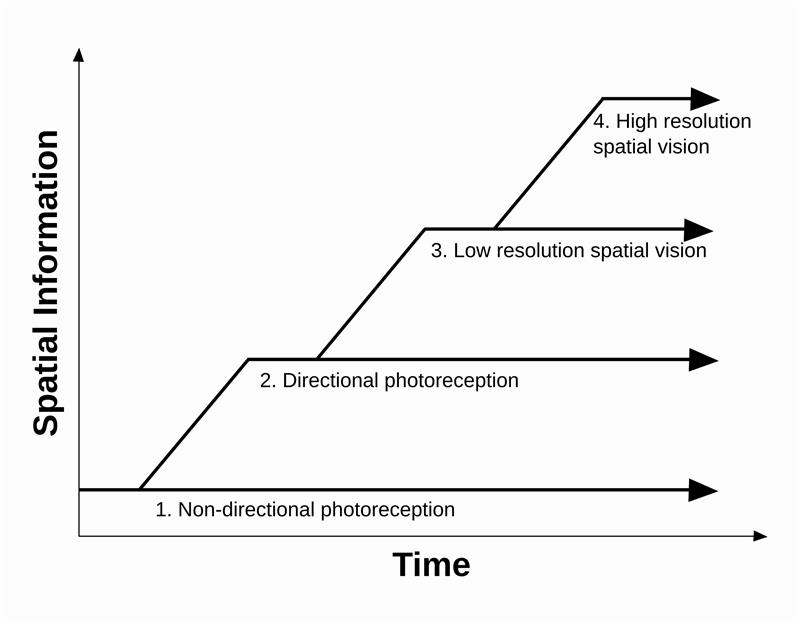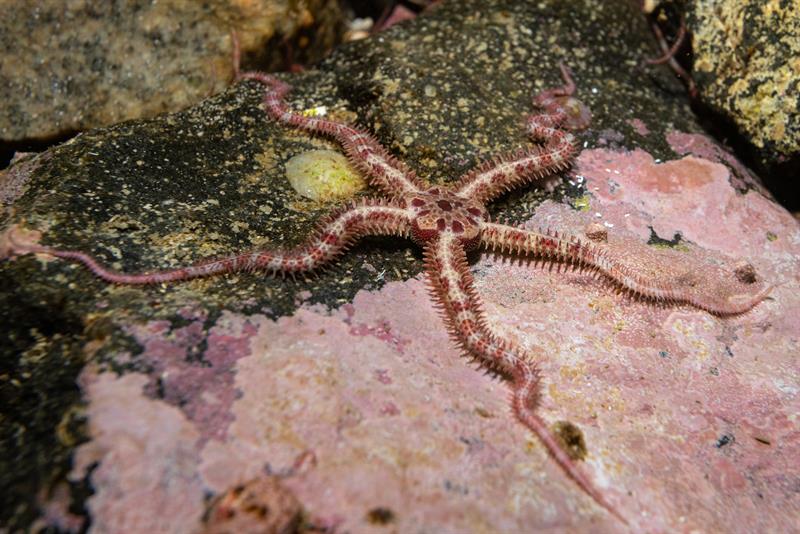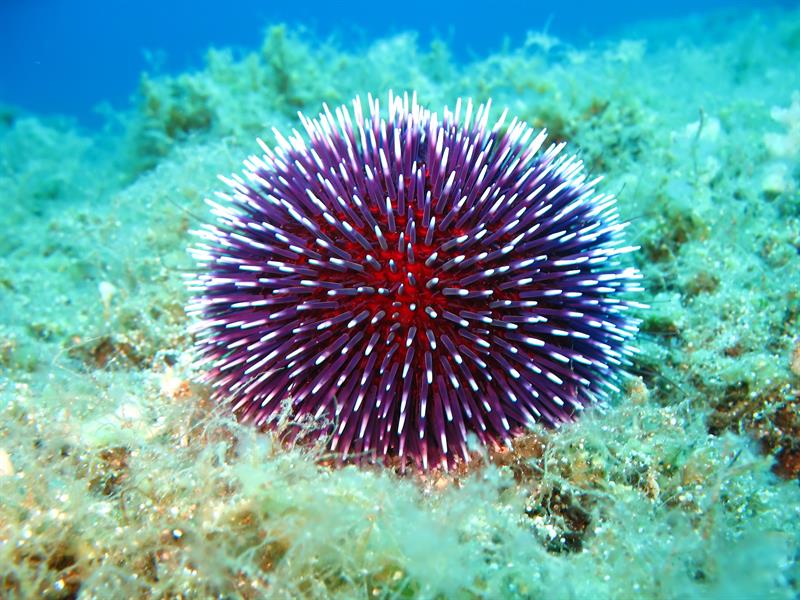
Vision is in the eye of the beholder, as the saying sort-of goes. But what about when the beholder has no eyes? As strange as it might sound, “eyes” in the traditional sense aren’t always required for vision. For many animals, vision doesn’t come from a pair of obvious eyeballs on their heads, afterall, not all animals even have a head. In this article, I’ll highlight a few animals that do vision in a very different way from us.
It’s important to understand that just as there are many types of eye, there are many types of vision; the word “vision” being used in the broadest sense of the word to mean the detection of light in some form. Broadly speaking there are four types of light detection, which vary in their level of sophistication (figure 1). The most basic form is non directional photoreception which, as the name suggests, just gives an animal an idea of whether their environment is bright or not. Non directional photoreception is used for tasks such as regulating circadian rhythms or mediating colour change in an animal. Next on the ladder is directional photoreception, which as well as detecting the presence of light, gives an animal an indication of the direction it is coming from. This is used for tasks such as finding shelter or controlling vertical migration within the water column. Neither directional nor non directional photoreception require the sophisticated organs that we would think of as eyes. Instead, these sensory tasks can be achieved with simple groups or stacks of photosensitive receptor cells distributed across an animal’s body. These basic forms of light detection are referred to as “photoreception” rather than vision.
The next two forms of light detection involve image formation and are generally what is meant when referring to “vision”. Low resolution spatial vision means that an animal can form an image, or picture, of their world in terms of the light available, albeit in a blurry, general-gist sort of way. Then finally, there is high resolution spatial vision of the type that humans, most mammals and many other animals enjoy. The type of eyes required for spatial vision are more sophisticated than the simple light detectors required for photoreception as spatial vision is far more complicated. It requires that the eye pinpoints the different sources of light in a scene more accurately than just their vague direction. To do this, an eye must effectively be subdivided into smaller units, each of which has its own unique field of view. An image is then formed by connecting together the outputs of this mosaic of smaller light detectors. It’s very similar, in principle, to an image from a digital camera that is made up of individual pixels. Take a pixel on its own, and you can tell if it is light or not (non directional photoreception), take a few pixels scattered about and you might be able to tell which direction the light is coming from (directional photoreception), but to form an actual image you need a vast array of pixels. Even then, to get a really good (i.e. high resolution) image, you need to collect so much light that additional optics, such as a lens, are required.
 Figure 1: There are broadly four types of vision, each more sophisticated than the last. Although some animals, such as ourselves, have evolved extremely sophisticated vision, not all animals require that level of complexity and so continue to evolve with simple photoreception.
Figure 1: There are broadly four types of vision, each more sophisticated than the last. Although some animals, such as ourselves, have evolved extremely sophisticated vision, not all animals require that level of complexity and so continue to evolve with simple photoreception.
As mentioned in the introduction, not all animals need eyes like ours in order to detect light. Traditionally, it was thought that animals with the ability to sense light without eyes, called extraocular photoreception (EOP), only had rudimentary vision. It was believed that EOP could only confer behaviours such as circadian rhythm, phototaxis (an attraction or repulsion in response to light), reflexes and colour change, but not spatial resolution. Recall that spatial vision is what we think of when we humans use the word “vision”. To us, eyes come in pairs on an animal’s head. While that is true for many animals, it’s not true for all of them. Take the chiton for instance.
As animals go, chitons are not the most exciting. They’re a species of mollusc, the diverse family that includes snails, octopuses, squid, clams, scallops and oysters amongst others. Like limpets, they cling to rocks and eat the algae that grows there. Unlike limpets, they don’t have a separate shell, but have a thick, hard body that is a flat oval shape. The colour and pattern of a chiton can vary depending on species, age and habitat. Their hard body consists of eight overlapping plates made of aragonite, one of the two forms of crystal calcium carbonate (the other bein calcite) that animals can produce from the minerals in sea water. Interestingly, these plates contain thousands of narrow canals filled with branches of the nervous system termed aesthetes. Aesthetes serve a variety of sensory functions including being photosensitive. In fact, in a few species, some of these aesthetes actually form simple camera-type eyes, complete with a lens and retina. Rather than just having two at the “head-end”, these simple eyes are scattered all across the chiton’s body, though there are more towards the head. Is it possible that this network of tiny eyes could confer the animal with spatial vision?
Distinguishing between low resolution spatial vision and directional photosensitivity is quite difficult. It’s not as if we can ask a chiton to read off a set of letters from a chart, or describe what it can see around it! Instead, the researchers investigating this showed “eyed” and eyeless species of chitons two types of stimulus. One had a dark expanding circle on a bright background that mimicked the looming behavior of a predator swimming towards the chiton, and the other stimulus was just a change in the brightness level of the screen, calibrated to be the same average brightness change as for the looming circle. When a chiton is under threat of predation, they perform their only known response behaviour; they clamp down hard on the rock. The hypothesis is, if the chiton has spatial vision, it will respond to the looming circle and not to the brightness drop stimulus as it can see that, although it’s become darker, there’s nothing coming towards it. On the other hand, if it only has directional, or even non-directional photoreception, it will respond to both stimuli as it will not be able to see that there’s a difference since they have the same overall change in brightness. It turns out that the chitons with the small eyes could tell the difference between the two stimuli, while the chiton that didn’t have the eyes, just photosensitive aesthetes, responded to both. So the network of tiny eyes does give the chiton spatial vision, when it would otherwise just have directional photoreception.
A few species of brittle star (figure 2) were also thought to have eyes similar to chitons. The evidence was two fold, these brittle stars change colour in response to light and there are thousands of tiny clear, crystalline “microlenses” that cover their body that look a lot like eyes. It had been thought that there were a set of photoreceptors under each of these lenses, just as for chitons. For years, this theory was accepted yet never truly investigated. Finally, researchers did extensive anatomical and neurological modelling using advanced 3D scanning techniques. They did find an extensive network of photoreceptors across the body of the brittle star, just not underneath the crystalline structures people had been referring to as lenses. It still isn’t clear what role these lens-like structures play. Initially, the researchers thought that the vast network of embedded photoreceptors just conferred the animal with directional photoreception. However, follow up work showed that brittle stars do indeed have spatial resolution; they truly have vision without eyes.
 Figure 2: It was thought that brittle stars had similar eyes to chitons. However, it turns out that although they have what appear to be lenses all over their bodies, they aren’t eyes. Instead, they have clusters of photoreceptors that provide them with spatial vision.
Figure 2: It was thought that brittle stars had similar eyes to chitons. However, it turns out that although they have what appear to be lenses all over their bodies, they aren’t eyes. Instead, they have clusters of photoreceptors that provide them with spatial vision.
Sea urchins (figure 3) have no microlenses or obvious eyes, yet they too have spatial vision. Not only do they navigate towards dark regions, which could indicate that they have directional photoreception and not image forming vision, but when shown with a dark looming stimulus that can be interpreted as an approaching predator, they respond with an alarm response of spine-pointing towards the loom. As for the chiton, the differentiation between a loom and an overall change in the average brightness indicates that sea urchins have spatial vision rather than just photoreception. But how do they manage it without anything that even resembles an eye?
It turns out that, far from having no eyes, the entire sea urchin body can be considered to be one whole eye similar to a compound eye. Compound eyes, of the type most insects have, are made up of hundreds or thousands of individual units, each of which is surrounded by a layer of screening pigment to stop light “leaking” from one unit into its neighbours. Compound eyes are effectively lots of separate eyes joined together in a single ball. In essence, all spatial vision ultimately depends on restricting the angular width over which light can reach each region of a photosensitive surface in order to preserve a distinct field of view. In compound eyes, the screening is done by pigments, while in the sea urchin, that screening role is performed by the multitude of spines blocking light between neighbouring clusters of photoreceptor cells. It would be similar to standing in a small clearing in a forest and looking up; you’d only be able to see the patch of sky directly above you, with the rest of the view obscured by the surrounding trees. Exactly how the outputs of this network of distributed photoreceptors are connected to give the sea urchin spatial vision remains an area of active investigation.
 Figure 3: A sea urchin’s entire body is its eye! The urchin’s spines play the same role that screening pigment does in a compound eye; restricting the field of view of a photoreceptor to provide the animal with spatial vision.
Figure 3: A sea urchin’s entire body is its eye! The urchin’s spines play the same role that screening pigment does in a compound eye; restricting the field of view of a photoreceptor to provide the animal with spatial vision.
To see the world in the form of a detailed image, it turns out that an animal doesn’t necessarily need to have two distinct eyes located on its head. As as chitons, brittle stars and sea urchins demonstrate, relatively sophisticated vision can be achieved using many different forms of eyes, or even without any distinct eyes at all. Visual systems can even co-opt an animal’s own body structure to also fulfill an optical role. They’re eyes; but not as we know them!
Dr Ilse Daly is a research associate at the School of Biological Sciences at the University of Bristol.
